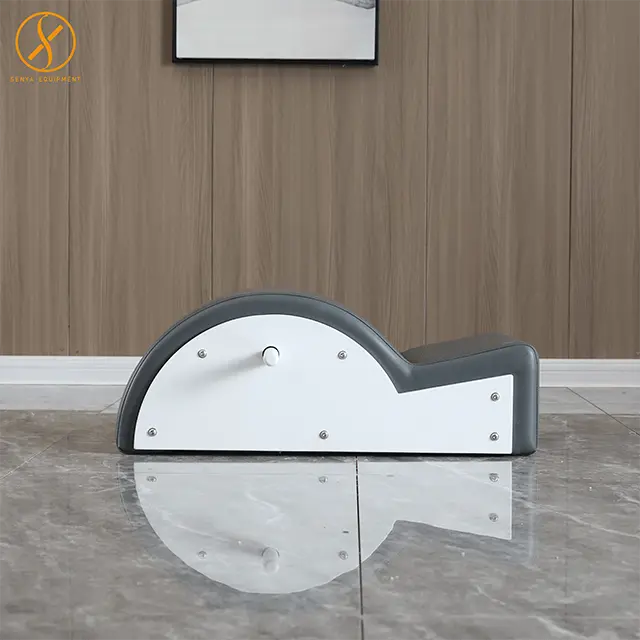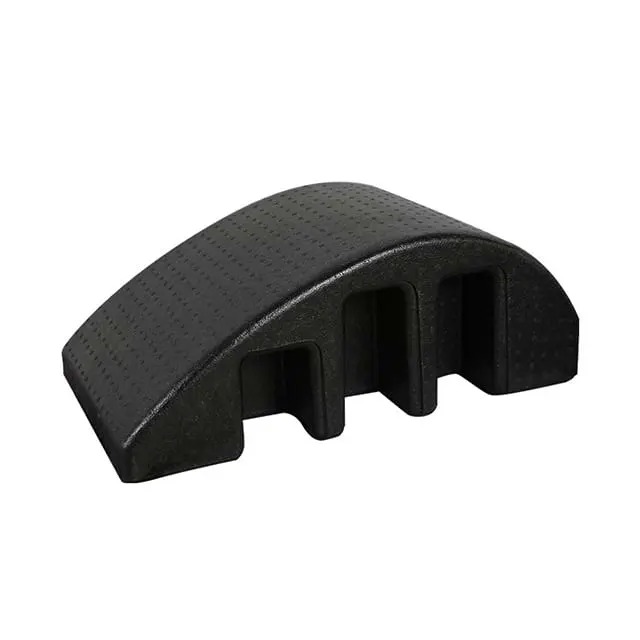T: +86-150-0640-1267
E: susan.liu@jnsenya.com
E: susan.liu@jnsenya.com
Room 708, Y1, Wanda Apartment, No.57 Gongye South Road, Jinan, China (shandong) Pilot Free Trade Zone
Views: 169 Author: Site Editor Publish Time: 2025-07-28 Origin: Site











In the world of Pilates, there are many specialized pieces of equipment designed to improve posture, build core strength, and enhance flexibility. Among these, the Spine Corrector stands out as a compact, powerful, and versatile tool for correcting spinal alignment and improving back health. Whether you're a seasoned Pilates practitioner or a beginner looking to deepen your body awareness, the Pilates Spine Corrector is an essential addition to your routine. But what exactly is it, how does it work, and what benefits can you expect from using it? Let’s dive into the details.
The Pilates Spine Corrector, also known as the "Pilates Arc" or "Step Barrel," is a curved apparatus specifically engineered to support the natural curvature of the spine. It consists of a padded, arc-shaped surface attached to a stable base or wooden box, sometimes with added steps or handles for enhanced versatility.
At its core, the Spine Corrector serves a dual purpose: to stretch and to strengthen. The curve of the arc allows for deep spinal extension, targeting the thoracic and lumbar regions. This is particularly valuable for individuals who spend long hours sitting, as poor posture habits can cause spinal compression and muscular imbalances.
Originally designed by Joseph Pilates, the Spine Corrector was created to help align the spine, open the chest, and increase mobility in the shoulders and hips. Unlike larger Pilates machines like the Reformer or Cadillac, the Spine Corrector is lightweight and compact, making it ideal for both studio and home use.
The primary function of the Spine Corrector is to restore and maintain the natural curves of the spine. By gently guiding the spine through controlled flexion and extension movements, this apparatus encourages proper vertebral alignment. Regular use can help counteract kyphosis (rounded upper back), lordosis (exaggerated lower back curve), and scoliosis (sideways curvature).
The open chest and shoulder positioning that the arc facilitates is particularly effective for reversing "tech neck" — a modern-day postural issue caused by prolonged screen time. Over time, users often experience better upright posture, less back pain, and improved breathing patterns due to increased chest mobility.
Beyond spinal alignment, the Spine Corrector is a highly effective tool for engaging the core. Pilates exercises performed on the corrector require activation of the abdominal muscles, obliques, pelvic floor, and lower back. These areas work synergistically to support the spine during movement.
Because many exercises involve balancing on the curved surface, users also improve proprioception and body control. The instability of the arc engages deep stabilizing muscles that might otherwise be overlooked in traditional mat workouts. With consistent use, practitioners develop stronger core musculature, improved flexibility, and better muscular symmetry.

Let’s take a closer look at the typical structure of a Spine Corrector. Although designs may vary slightly, most models share a common set of features.
| Component | Description |
|---|---|
| Curved Arc Surface | Padded and contoured to match spinal curvature; supports back during movement. |
| Stable Wooden Base | Provides stability and support; often made from high-quality birch or beechwood. |
| Footrest/Step Area | Used for leg and hip exercises; offers leverage and balance. |
| Handles (Optional) | Located on the sides or base; assist with stability and positioning. |
| Eco-Friendly Materials | Often constructed using non-toxic foam and sustainable wood materials. |
The materials used are typically selected for durability, comfort, and environmental safety. High-density foam ensures cushioning during exercises, while hardwood frames provide longevity and sturdiness, especially in high-use studio environments.
The Swan Dive is one of the most iconic movements performed on the Spine Corrector. It focuses on thoracic extension, encouraging openness through the upper back and chest while strengthening the posterior chain.
How it works: The practitioner lies with the back arched over the barrel, hips and legs extended, and arms reaching overhead. As they inhale, they extend the spine further over the arc, then exhale to return. This creates both a dynamic stretch and an active muscular engagement through the back.
This variation targets the lateral abdominal muscles, especially the obliques, which are essential for rotational movements and side bending.
Execution: The user sits sideways on the arc, one hip anchored and legs extended. With the upper body in a diagonal line, the torso flexes laterally over the barrel and returns to upright. This strengthens the obliques and challenges balance simultaneously.
This mat-based movement becomes more intense on the arc due to its elevation and instability. By elevating the hips and engaging the pelvic floor, leg circles performed on the Spine Corrector enhance core stability and increase hip range of motion.
These movements not only improve athletic performance but also reduce the risk of hip and lower back injuries. They’re especially popular in rehabilitation settings or for aging populations looking to retain mobility.
The Spine Corrector is suitable for a wide range of users, from beginners to advanced athletes, including:
Office workers with sedentary jobs
Posture-conscious individuals seeking to improve spinal alignment
Pilates enthusiasts looking to deepen their practice
Rehabilitation patients recovering from back, hip, or shoulder issues
Athletes and dancers aiming to enhance flexibility and core strength
Elderly users focusing on balance, stability, and fall prevention
However, individuals with severe spinal disorders or herniated discs should consult a qualified healthcare professional or Pilates instructor before beginning.

Yes! The Spine Corrector is compact, lightweight, and doesn’t require a lot of space, making it ideal for home workouts. It's also quiet to use and doesn't involve cables or springs like other Pilates equipment.
For best results, it's recommended to use it 2–4 times per week. Consistency matters more than duration. Even short, targeted sessions can yield substantial benefits.
Absolutely. Many exercises on the Spine Corrector are beginner-friendly. However, beginners should start with guided instruction, either through a certified trainer or video tutorials, to ensure proper form and avoid strain.
The terms are often used interchangeably. However, some Pilates Arcs are simpler versions made entirely of foam and used primarily on the mat. Traditional Spine Correctors have a wooden base and more structure, offering greater versatility and stability.
If you're serious about improving posture, relieving back pain, enhancing core strength, or just diversifying your Pilates routine, the Spine Corrector is a worthwhile investment. Its ability to adapt to a wide range of movements, support spinal curves, and increase muscular engagement makes it a multifunctional tool for wellness and fitness.
More than just a piece of equipment, the Spine Corrector represents a holistic approach to body awareness and movement control. It encourages slow, mindful movements that engage not only your muscles but also your breath, focus, and alignment. With regular use, you can expect to see improvements in posture, strength, flexibility, and overall well-being.
Whether used in a professional Pilates studio or a personal home gym, the Spine Corrector is an intelligent and purposeful addition to any fitness regimen.